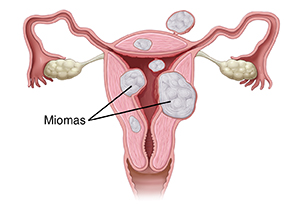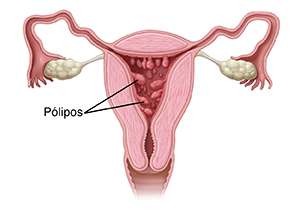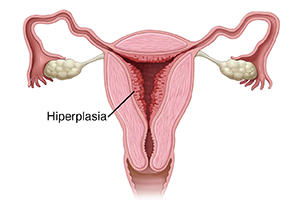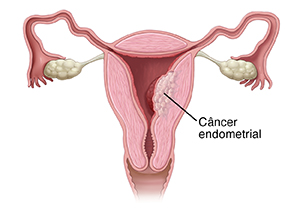Entendendo o sangramento uterino
O seu sangramento uterino pode ser intenso. Ou talvez você tenha sangramento entre as menstruações. Esses problemas podem ser causados por desequilíbrio hormonal. Ou podem ser causados por crescimentos uterinos, dispositivo intrauterino (DIU), distúrbio hemorrágico ou gravidez.
Desequilíbrio hormonal
Seu ciclo menstrual é controlado por hormônios. Os hormônios incluem estrogênio e progesterona. Às vezes, há muito ou pouco de um ou de ambos os hormônios, causando um desequilíbrio. Isso pode causar fluxo menstrual intenso. Ou pode causar sangramento entre as menstruações. As causas do desequilíbrio hormonal incluem:
-
Alterações hormonais em adolescentes e mulheres próximas à menopausa
-
Diabetes, doenças da tireoide ou outros problemas médicos
-
Obesidade
-
Estresse
-
Exercícios extenuantes
-
Anorexia, um distúrbio alimentar
-
Gravidez
Crescimentos uterinos
Há diferentes tipos de crescimentos uterinos. Por exemplo:

Miomas. São nós redondos de tecido muscular não canceroso (benigno) no útero.

Pólipos. São crescimentos de tecido mole no revestimento uterino. Frequentemente, estendem-se até o útero.

Adenomiose. É quando o revestimento uterino cresce na parede muscular.

Hiperplasia. Ocorre quando o revestimento uterino fica muito grosso ou cresce demais.

Câncer endometrial. É o crescimento descontrolado de parte do revestimento uterino.
Outras causas do sangramento uterino
Há outras causas de sangramento uterino. Por exemplo:
Tratamento
Seu médico pode ajudar a diagnosticar a causa do seu problema de sangramento. Ele trabalhará com você para planejar o tratamento conforme necessário.
© 2000-2025 The StayWell Company, LLC. All rights reserved. This information is not intended as a substitute for professional medical care. Always follow your healthcare professional's instructions.